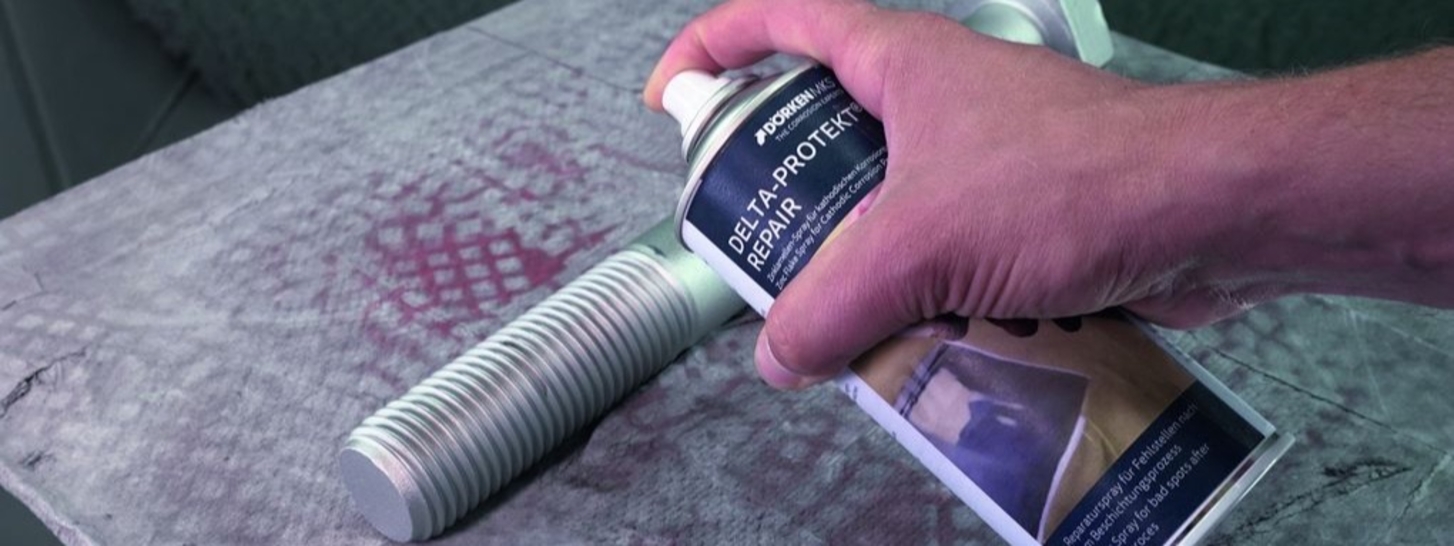How does zinc flake spray work?
In a zinc flake spray there is an aluminum-zinc mixture. When sprayed evenly onto a metallic surface, this mixture forms a protective film that protects the material from corrosive environmental influences. This is a so-called cathodic corrosion protection, in which the zinc component, which is less noble than the metal, decomposes itself over time. This electrochemical reaction protects the coated metal from rust damage.
In which areas can I use zinc flake spray?
As a rule, zinc flake sprays are used when individual components need to be coated manually or defective coatings need to be repaired with little effort. Zinc flake sprays can be used in practically all industries. Whether in simple manufacturing processes, in automotive production or in the construction of wind turbines - the spray is versatile and enables you to apply it over small areas without the need for a complete recoating.
What should I pay attention to when using zinc flake spray?
If you use a zinc flake spray, you should consider the following points in doing so:
- Preparation: Clean object thoroughly / Wear protective clothing / Use only in well-ventilated areas / Shake well before use
- Application: coat object opaquely / avoid overcoating / keep a safe distance
- Drying: at room temperature 60 minutes / forced drying at 80°C for 10 minutes
Upon request, we will also be happy to advise you on how you can ideally use our zinc flake spray for coating
What are the properties of zinc flake spray from DÖRKEN?
Our zinc flake spray DELTA-PROTEKT® REPAIR has the following properties:
- Particularly suitable for bare metals
- Cure at room temperature (15-35°C)
- Layer thickness approx. 10-30 μm
- Certified according to DIN EN ISO 9227-NSS (salt spray test)
- Cathode corrosion protection at a high level
- Free from additives (heavy metals, resins, etc.)
In addition, our zinc flake spray is ideally matched to the rest of our product range and can be completely painted over.
What distinguishes zinc flake spray from DÖRKEN from other zinc sprays?
The special strength of our zinc flake spray is its purity. The spray contains pure zinc flakes and comes entirely without additives. Due to a high proportion of high-quality zinc flakes, our spray is particularly easy to use, provides excellent coverage and is absolutely reliable in use. We do not add any other heavy metals to our sprays. Active ingredients such as isocyanates, acrylates or epoxy resin are also left out of the production process. In addition, we also consistently avoid microplastics.
 Belgium nederlands
Belgium nederlands Belgium français
Belgium français Canada english
Canada english Canada français
Canada français China chinese
China chinese Czech Republic čeština
Czech Republic čeština Deutschland deutsch
Deutschland deutsch France français
France français Hungary magyar
Hungary magyar International english
International english Italy italiano
Italy italiano Netherlands nederlands
Netherlands nederlands Poland polski
Poland polski Russia русский
Russia русский Slovakia slovenčina
Slovakia slovenčina Switzerland français
Switzerland français Switzerland deutsch
Switzerland deutsch Turkey Türkçe
Turkey Türkçe USA english
USA english